Domestic tank missiles and shells
Since 1976, and until recently, domestic Tanks were the only carriers in the world of guided weapon systems manufactured in series. This gave them an advantage in the fight against enemy tanks at long ranges (up to 5 km), on which the use of cumulative and sub-caliber shells is ineffective or impractical.
Today, similar tank munitions with similar or superior Russian counterparts characteristics are developed and produced: USA - “MRM”; Israel - “Lahat”; South Korea - KSTAM; France - "Potynege"; Ukraine - “Combat”, “Stugna” (see magazines “Weapon", No.6, 2011; No.2 2012).
Nevertheless, Russian developments, which served as the basis for Ukrainian tank-guided missiles (TUR), unlike most of the projectiles listed above, have long been mass-produced and have several advantages, although they are inferior in range and guidance system to the Israeli-produced Lahat and others foreign samples.
COMPLEX 9K112 "COBRA"
The first tank anti-tank missile system (ATGM), adopted by the Russian army in 1976, was the Cox, an EC112 complex, the development of which began as early as the end of the 1960. The lead developer of the complex "Cobra" is OJSC "KB precision engineering them. A.E. Nudelman "(KBTM, Moscow).
The “Cobra” complex used the radio command guidance method with automatic tracking of the rocket through the light source. Tests of the 9K112 "Cobra" complex were carried out at 1975 on a converted T-64А tank equipped with a quantum rangefinder sight. The rocket was launched from the barrel of a standard 125-mm 2-46 gun. After successful tests in 1976, the upgraded T-64B tank with the 9K112-1 missile system, including the 9М112 guided missile, was put into service. Two years later, the T-80B tank with a gas turbine engine developed by the design bureau of the Leningrad Kirov Plant, equipped with the 9KXNNXX-112 rocket complex (missile
9М112М). In the future, the Cobra complex was equipped with the main tanks T-64BV and T-80BV and some other models of experimental or small-series machines.
Unfortunately, the technical appearance of the Cobra was affected by the limited capabilities of domestic 1960's technology, which determined the use of radio command guidance with equipment that is not safe for microwave radiation as for its infantry in the area in front of the tank at a distance of up to 100. , and for the crew in the event of a waveguide failure. The equipment also required considerable time to enter the magnetron mode when the complex was put on alert. It did not quite meet the requirements of noise immunity and the automatic tracking equipment for a rocket at a light source.
Currently, the Cobra 9K112 complex, although it continues to be in service with the Russian armed forces, is morally obsolete. In the eighties, KBTM modernized the 9K112 complex under the name of Agon using the new 9М128 rocket. According to the results of the work carried out, the possibility of penetration by a cumulative warhead (warhead) of homogeneous armor with a thickness of up to 650 mm was ensured. However, by the time the development in 1985 was completed, the Svir complex 9K120 was accepted into service.
The 9K120 Svir complex was developed by the Tula Instrument Engineering Design Bureau (KBP). It was installed on the T-72BM, T-72B tanks. The principal difference between “Svir” and “Cobra” was the interference-free semi-automatic rocket control system using a laser beam. The 9K120 guided weapons complex provides firing of guided missiles during the day and from short stops at ranges from 100 to 4000. Almost at the same time, the T-80U tank receives the Reflex complex, which is the same as Svir, 9X119 missile . Different systems "Svir" and "Reflex" control system. In the future, all newly manufactured tanks of the T-80 family were equipped with these complexes.
The 9K119 Reflex complex was also created in KBP, Tula. In 1985, after successful tests, it was adopted. It allows you to fire guided missiles from a tank moving at speeds up to 30 km / h at enemy armored targets at target speeds up to 70 km / h. "Reflex" also allows firing at fixed small-sized targets such as DOT, SDCs and low-speed air targets (helicopter) at distances up to 5000 m.
The complex can be used on fourth-generation tanks, regardless of the autoloader circuit. Currently, it is part of the standard armament of T-80U, T-80UD, T-XNUMHUM tanks (KUV 80K9М Reflex-M), T-119, T-84AG, T-72 and is offered for export.
The complex includes: an artillery shot ZUBK14, consisting of a throwing device 9X949 for pushing a rocket out of the barrel and a guided missile 9М119, as well as control equipment. The main difference between the “Reflex” complex and the 9K112 “Cobra” is the new missile guidance system based on the laser beam (tele-orientation of the rocket in the laser beam) and reduced mass and dimensional characteristics of the 9М119 rocket. The rocket is made in the dimensions of the conventional high-explosive fragmentation projectile ZVOF26 for the 125-mm gun, which allows it and the throwing device to be placed in the machine gun or tank loading mechanism.
The throwing device 9X949 is designed to hold the rocket in the bore of the gun and give it an initial speed. To reduce the overloads acting on the rocket when fired, the shooting is carried out at a reduced charge, ensuring the missile launch speed of about 400 m / s. A part of the length of the throwing device is occupied by a spring-loaded telescopic rod with a figure stop for a rocket. On the top of the stem are contacts for transmitting an electrical signal to the rocket. The spring-loaded telescopic rod ensures constant contacting of the launch chains of the 9М119 rocket and the throwing device 9X949 for various categories of gun barrel wear. Since the shooting is carried out at a significantly lower pressure in the barrel, which does not ensure the normal functioning of the tank gun ejector, a ring cylinder with carbon dioxide is placed inside the propelling device to displace the powder gases from the barrel after the shot.
The 9М119 rocket consists of a control compartment, a solid propellant propulsion rocket engine, a cumulative warhead and a tail section. The rocket is made according to the aerodynamic scheme "duck", has a folding plumage in the form of "cabbage leaf". In the folded position, the tail blades and the receiver unit are covered with a pallet protecting them from the effects of the projectile gas when fired.
After the launch of the rocket from the barrel, the pallet is dumped, the plumage opens, the rudders and air intakes are advanced. A counter-flow of air through two air intakes through elastic tubes, depending on the incoming commands, passes into the working cavity of the corresponding power cylinder, turning the rudders in one direction or the other.
The cumulative warhead, unlike most anti-tank guided missiles (ATGM), has a somewhat unusual location. It is located not in front, but closer to the tail section of the rocket behind the steering gear and the rocket engine, which provides it with the most optimal functioning conditions. At the same time, for the purpose of free passage of a cumulative jet, the engine and the steering actuator have a central channel, which also provides for the laying of electrical communication cables for the front compartments with the tail section. In the tail section there is a laser receiver unit and an on-board light source - a lamp for observing the flight of the rocket. The placement of the engine in the central part of the rocket and the location of two nozzles in the front part of the engine reduces the influence of flowing powder gases on the laser receiving device.
The control system of the complex "Reflex" is semi-automatic. Tracking the target and guidance is carried out through the rangefinder sight of the pointing device (PDN) 1-XXNX, which is part of the 46-X1 Irtysh weapon control system. The device is the main means of controlling the fire of the tank, which the gunner works with when firing from a cannon, a machine gun paired with it, as well as when launching and pointing a guided missile. It represents: a - laser range finder; b - information block 45С9; c - the gunner’s periscope daytime rangefinder with independent stabilization of the visual field in two planes and smoothly adjustable from 516 to 2,7-fold magnification.
The signal "Start" information block 9C516 included in the optical scheme of the sight. Ignited laser operating in the invisible spectrum of wavelengths. The rocket is fired at the laser beam, which, as the rocket is removed with the help of optics, is continuously narrowed so that, in the area where the rocket is located, the cross-sectional diameter of the beam was about the same and about 6 m
For the implementation of tele-orientation of the rocket in the cross-section of the beam, the laser radiation is modulated by special rotating discs with opaque rasters (stripes) applied on them. The laser beam passes through a rotating modulating disk, located in the gunner's sight. The rasters on the disk are applied in such a way that, when the disk rotates, the alternating raster flow alternately moves up and then to the side. Moving opaque rasters with a linear velocity VP interrupt the luminous flux with a certain frequency and create the information field of the beam, perceived by the rocket photoreceiver. The duration of the presence on the receiver of a rocket of a particular frequency determines the magnitude of the deviation of the rocket from the center of the beam. When the rocket moves away from the center of the beam, the duration of the information frequency pulses increases, and as the rocket approaches the center of the beam, the duration of the information frequency pulses decreases.
In the photodetector, light signals are converted into electrical signals proportional to the deviation of the rocket from the axis of the beam in the horizontal and vertical planes (along the course and pitch), which then enter the control section. Due to this, on board the rocket there is information about the deviation of the rocket from the axis of the guidance beam, and the onboard equipment produces commands that return the rocket to the axis of the beam. The gunner can only keep the mark of sight on the target.
The complex provides the possibility of shooting on dusty soils. To increase the stealth of shooting and eliminate the impact of local objects on the rocket’s flight, the smoke and dustiness of the battlefield in the Reflex complex, a firing mode is possible that the rocket’s flight path exceeds the gunner-target line on the 2-5 m. After the shot, the information beam is automatically raised . The rocket flies to the target at an altitude of about 5 m above the gunner-target line. The time spent by the rocket on an inflated trajectory is determined by the distance to the target, which is determined using a rangefinder sight. For 2 with before meeting for the purpose of the rocket is automatically displayed on the line "gunner-target."
Subsequently, the complex was upgraded and received new artillery shots: ZUBK20 and ZUBK20М. The ZUBK20 shot consists of the same 9X949 projectile as in the Reflex complex and the upgraded 9М119М guided missile, and the ZUBK20М shot includes the 9М119М1 rocket.
The 9М119М “Invar” rocket was put into service in 1992, and the 9М119М1 “Invar-M” rocket a little later - in the second half of 1990-s. The main difference between the 9М119М rocket and 9М119 is in a cumulative tandem warhead. The warhead consists of a leading charge ("leader"), designed to initiate dynamic protection, and the main charge increased from 700 to 850 mm
armor penetration In addition, an electronic delay unit was introduced into the rocket design, designed to ensure the time interval between the leading and main charges triggering, as well as some other design changes related to the placement of the “leader” in the head part.
The 9М119М1 “Invar-M” missile, according to information in the media, has a greater armor penetration, which is about 900 mm without dynamic protection. According to the developers, the 9М119М and 9М119М1 missiles are capable of hitting any modern or advanced tank. During operation, rockets do not require maintenance or inspections and remain combat-ready, similar to an artillery projectile, throughout their entire service life. The missile can also be used as part of the Rupture 9K118 guided weapons complex - for the 125А2М Sprut-B towed anti-tank gun.
To defeat lightly armored and unarmored vehicles, as well as manpower, located in buildings, trenches, caves, the most appropriate use of high-explosive and high-explosive ordnance. However, the use of uncontrolled high-explosive fragmentation (RP) shells at distances over 2 km is ineffective due to the low accuracy of the hit. The use for this purpose of the above described tank guided missiles with a cumulative warhead does not provide the required effectiveness of action against enemy personnel and fortifications. A new step in enhancing the power of domestic tanks was the creation of guided munitions with fragmentation and high-explosive fragmentation warheads: 9М119Ф and 9М119Ф1.
In order to expand the range of fire tasks solved by tanks at the “Plant them. V.A. Degtyarev "(" ZiD ", Kovrov) was developed shot ZUBK14F with a guided missile 9M119F with a high-explosive warhead. A shot of a tank guided weapons complex ZUBK14F
intended for firing from 125-mm tank guns according to calculations of anti-tank weapons, enemy manpower in open areas or in field-type buildings and shelters, at small ground targets such as embrasure of pillboxes, high-speed equipment, and low-flying low-speed attacking targets. The high probability of hitting, in combination with the great power of the high-explosive charge of the rocket, makes the ZUBK14F shot indispensable for solving many fire missions with minimal ammunition consumption and fire weapons attraction. With the use of 9M119F missiles, it is possible to destroy with one shot well fortified firing points beyond the range of the enemy’s retaliatory fire, since the missile’s controlled flight range is 5 km.
In the context of modern local conflicts, as well as during counter-terrorism and anti-sabotage operations, it becomes urgent to equip tanks with high-precision guided fragmentation and high-explosive fragmentation munitions with high combat effectiveness. Use in such conditions of high-precision ammunition with increased power of high-explosive fragmentation warheads will allow to destroy mobile armed groups on the ground and during their movement, as well as to destroy buildings (houses), shelters and equipment in which they are located.
To solve such problems, ZiD jointly with GosNIImash (Dzerzhinsk, Nizhny Novgorod region) developed a ZUBK14F1 shot with a 9М119Ф1 guided missile equipped with high-explosive fragmentation warhead of increased power.
A significant increase in the high-explosive and high-explosive fragmentation actions was achieved by placing within the existing design of the 9М119 rocket a modular warhead consisting of two units located along the rocket axis: the bottom (high-explosive action) and the additional head (fragmentation-high-explosive action).
The placement of the second unit was made possible by replacing the rocket engine with another warhead (there are no side nozzles in the photos of the 9М119Ф1 projectile, unlike the 9М119 rocket,). The absence of the engine led to the fact that the maximum range of the controlled flight of the projectile decreased to 3500 m. However, given the power the projectile acquires and that the range of the beginning of the battle for the relief of the plain type roughly corresponds to the indicated figure, the developers agreed to this.
The main advantage of the projectile is a multiple increase in the high-explosive and fragmentation effect on the target in combination with high accuracy of the hit. The use of a two-unit warhead and the use of new high-energy explosive compositions allowed to place in a limited amount of charge, the effectiveness of which is 2-3 times the effect of existing ammunition of the same caliber. Due to the presence of an air gap between the head and bottom blocks, undermining the head block of the warhead occurs with a certain time delay, which increases the efficiency of hitting the target by increasing the high-explosive action as a result of approaching the point of explosion of the charge to the target. It also creates a significant increase in the efficiency of fragmentation due to a more uniform distribution of the field of fragments than in other similar structures. The use of high-precision guided weapons with OFBCH (high-explosive fragmentation warhead) of high power ensures the destruction of the enemy’s dispersed manpower from the first shot (including in personal protective equipment) within a radius of up to 20-25 m, as well as being in various types of shelters with simultaneous the destruction of shelters, and the defeat of small-sized lightly armored and unarmored targets.
The comparative analysis has shown that the inclusion of ammunition tank instead of the standard shot ZUBK14 with cumulative warhead shot ZUBK14F1 modular HE fragmentation warhead can to 60% increase the effectiveness of lesion "ATRA" type objectives "sheltered living force" emplacements in protective structures, buildings etc. at ranges up to 3200-3500 m. Some advantage is the shot ZUBK14F1 has over the regular ZUBK14 and in the defeat of light armored equipment at the specified distances due to a higher conditional probability of damage (close to 1, against 0,7-0,8). Thus, a ZUBK14F1 shot can effectively hit a wide range of small-sized targets at ranges up to 3,5 km, including it can be used to hit modern tanks equipped with dynamic protection. As a result of the absence of the main engine, the 9М119Ф1 guided projectile cannot be detected on the trajectory using ultraviolet radiation sensors of rocket engines ATGM installed in some foreign complexes.
The 9М119Ф rocket and the 9М119Ф1 projectile are controlled in the same way as the 9М119М rocket, and no additional control equipment is needed. If necessary, the ZUBK14F and ZUBK14F1 shots can also be used as part of the Sprut self-propelled anti-tank gun 2C25.
Above was a description of modern Russian anti-tank missiles fired from an 125-mm tank gun. The Russian army also adopted guided weapons complexes for firing 100-mm tank and anti-tank guns, as well as firing X-NUMX-mm tank guns U-115TS. However, all of them are somewhat inferior in their characteristics to the samples considered above. Nevertheless, the adoption of these systems significantly expanded the capabilities of the obsolete 5-mm anti-tank and 100-100-mm tank guns, adding new qualities to both obsolete tanks and modern infantry and airborne combat vehicles.
2 table. TTH 125-mm complexes of tank guided missiles and shells
COMPLEXES OF CONTROLLED ARMAMENT FOR 100-MM AND 115-MM TOOLS
COMPLEXES OF MANAGED ARMAMENT 9K116 "KASTET", 9K116-1 "BASTION", 9K116-2 "SHEKSNA" and 9K116-3 "FASHION"
The 9K116 "Castets" complex with a laser-guided missile after successful tests in 1981 was adopted by the USSR Ground Forces. It was developed by a team of Tula KBP, headed by A.G. Shipunovym and was intended for firing of 100-mm smoothbore anti-tank gun MT-12.
The complex consists of a shotgun XUBK NUMX with a guided missile 10М9 and ground control equipment and a power source located in a combat position next to an artillery system.
The flight control of the rocket is carried out with the help of a pointing device using a laser beam operating in the invisible part of the spectrum. In addition, a switch block is installed on the gun, which is connected to the cable control device, which, when fired, enables the laser emitter and the software device to change the control field created in the laser beam.
During the operation of the complex, at the direction of the commander of the calculation, the gunner of the gun and the operator of the control device, independently of each other, point the crosshairs of the sights on the target and accompany it. The gunner and the operator report the readiness for shooting to the commander. At the command of the commander, the gunner presses the start handle and continues to follow the target until the moment of the shot. At the moment of pressing the start handle, the laser emitter is turned on, and when the instrument rolls back, a software device for changing the control field is started. After the shot, the operator of the instrument with the help of pointing drives keeps the crosshair on the target until it is defeated.
The rate of fire when firing guided missiles at a maximum range of 3-4 shot per minute. The reduced mass of the propellant charge, as well as the presence of carbon dioxide cylinders in the shot, made it possible to eliminate the flash of light when fired, significantly reduce the dust cloud and reduce the effect of the shot.
Even before the completion of the development of the "Kastet" complex, it was decided to launch the development of unified guided weapon complexes for the T-54, T-55 and T-62 tanks. Almost simultaneously, two complexes were developed: the first - the 9K116-1 “Bastion”, compatible with 100-mm rifled guns of the D-1 family FROM T-54 / 55 type tanks; the second is the 9K116-2 "Sheksna", designed for T-62 tanks with 115-mm smooth-bore guns Y-5ТS. Both complexes use the same 9М117 rocket from the KASTET complex. But since the X-NUMX-mm guns of the U-115TS have a larger caliber, the 5М9 rocket was additionally equipped with support belts to ensure steady movement along the bore and to prevent gas breakthrough forward of the projectile. In addition, the propellant liner was changed to fit the 117-mm gun. The development of tank complexes was completed in 115. As a result, at relatively low costs, it became possible to upgrade second-generation tanks, greatly increasing their combat effectiveness and fire capabilities.
The bastion 9K116-1 “Bastion” complex consists of the following elements: shot of ZUBK10-1 with a guided missile 9М117; control equipment "Wave"; sight-pointing device 1K13-1; voltage converter 9C831. Shooting shots ZUBK10-1 is made from gun D10-T2С tank T-55А. Targeting the 9М117 rocket is carried out using the control field in a laser beam.
The tank automated fire control system "Wave" was created on the basis of the equipment of the complex "Kastet". It is distinguished by the minimum mass and volume of units installed on the tank occupying 47 l. The guidance system is well protected from various interferences and provides high accuracy of damage.
A unitary shot ZUBK10-1 is a single assembly of the rocket and sleeves with powder charge 9X930. In the steel sleeve, in addition to the powder charge, there are three tubular cylinders located along the axis of the sleeve. The cylinders are filled with liquid carbon dioxide and are designed to displace the combustion products from the sleeve and part of the bore after the shot until the end of the extraction sleeve. Powder charge
The 9М117 rocket is made according to the aerodynamic “duck” scheme and consists of the following main parts: the steering drive unit (1); warhead (2); March propulsion system (4); hardware compartment (5); communication unit (7); pallet (8). In flight, the rocket rotates thanks to a tail of the tail.
The air-dynamic steering gear unit of a closed circuit with a frontal air intake is located in the nose of the rocket and is designed to convert control electrical signals into mechanical movements of the rudders. Before the shot, the rudder blades are folded inside the block and covered with shields. After the launch of the rocket from the bore of the barrel, the blades are opened by the opening mechanism, rejecting the flaps, and fixed in the working position. The working body in the steering gears is the oncoming air flow, which enters the rocket through the central air intake in its nose section. When flying, the counter-flow of air through the hole passes into the receiver and the switchgear of the steering machines, which, depending on the control electrical signal, delivers air to one or another working cylinder of the steering machine.
The warhead 9H136M of the cumulative type is located between the steering gear unit and the march propulsion system. At the bottom of the warhead is a safety-actuating mechanism (PIM), which ensures the self-destruction of the missile in the event of its miss. At the meeting of the projectile with the aim of crushing the fairing of the steering gear unit and closes the electrical circuit supply voltage to the detonator PIM.
The propulsion system is a single-chamber solid propellant rocket engine (RDTT) with a front arrangement of two nozzles located at an angle to the rocket axis. The solid fuel charge has a central channel, inside of which there is a thermally insulated tube through which the wire harness passes. The harness provides electrical connection of the warhead and steering gear to the instrument compartment.
Behind the solid propellant solid-propellant motor device there is a hardware compartment, which consists of a power supply unit, a communication unit, a gyro coordinator, electronic equipment and a stabilizer unit. At the end of the tail section of the instrumental compartment there is a communication unit with a laser receiver lens and a headlight lamp to monitor the rocket flight. In the folded state, the blades of the stabilizers are held with the help of a pallet discharged after the launch of the rocket from the barrel. The pallet protects the tail section of the projectile against the impact of a firing charge gas when fired. The pallet also houses a magnetoelectric generator.
Since the shot was developed for firing from the MT-12 towed gun, where the ignition of the powder charge is carried out as a result of the mechanical effect of the striker, and not as a result of an electrical impulse, it was necessary to develop a device that generates an electrical impulse supplied to the onboard rocket power and solid propellant electric igniter . To this end, an inductor bush was placed in the rocket’s pallet, inside of which there is a magnetoelectric generator, which generates an electrical impulse when the armature is displaced by the impact of a cannon striker. As a result, electrical impulses are generated in the two windings of the inductor coil. From one winding, the current pulse arrives at the electric igniter of the onboard battery, and on the other, at the electric igniter of the expelling powder charge of the liner. Moreover, ignition of the expelling charge occurs with a delay necessary for entering the on-board control equipment mode.

The "Bastion" and "Sheksna" complexes later served as the basis for the creation of the 9K116-3 "Fable" guided weapons complex for the BMP-3 infantry fighting vehicle. The machine was created on the basis of an experienced BMP "object 688" "Fable", the development of which was conducted with 1978. In 1980, for BMP "Fable", KBM proposed a new set of weapons 2K23 with 100-mm gun - launcher 2А70 and twin knots 30-mm gun 2А72. In 1981, a new experimental BMP "688M object" was created with the 2K23 armament complex. Tests of the BMP began in 1982, and in 1985, the BMP-3 entered state and military trials. In May, the 1987 machine was adopted by the USSR Armed Forces. In ammunition armament machines include
8 ZUBK10-3 shots with 9М117 rocket. The rocket’s shot (launch) is made from a 100-mm 2-70 rifled X-gun. The missile is aimed by the sight - the 1K13-2 pointing device using the 1В539 ballistic computer and the 1Д14 laser rangefinder. The range of the 9K116-3 complex when fired with the 9М117 rocket is 4000 m.
Recently, the Tula KBP has been doing a lot of work on the modernization of missiles. In connection with equipping modern foreign tanks with dynamic protection, it became necessary to equip previously developed missiles with a tandem warhead, which required some changes in the design of the missiles. Starting with 1984, the KBP began upgrading 100 mm caliber rockets. A shot with a modernized rocket, known as the “Kan”, was successfully tested and adopted for use at 1993. Currently, AK Tulamashzavod mastered the mass production of the upgraded 9М117М rocket as part of the ZUBK10M-1 rocket with a tandem switch, punch armor tanks equipped with dynamic protection.
In order to increase the effectiveness of the destruction of modern and promising tanks in recent years, further modernization of 100-115-mm shots with the guided missile 9М117М Kan has been carried out. As a result, the ZUBK23-1, ZUBK23-2, ZUBK23-3 series with 9М117М1-1,2,3 “Arkan” missiles was developed. The upgraded 9М117М1-1,2,3 "Arkan" missiles are equipped with a tandem cumulative warhead and use the 9М117 missile guidance system. The shot of ZUBK23-1 with a guided missile 9М117М1-1 is intended for firing from a T-55 tank. Shot ZUBK23-2 with a guided missile 9М117М1-2 - for firing from a 115-mm cannon tank T-62В. Shot ZUBK23-3 with a guided missile 9М117М1-3 - for firing from the previously developed BMP-3 and modern airborne assault vehicle BMD-4 with a combat module "Bakhcha-U". The new combat vehicle BMD-4 enters the troops from the city of 2005 Her main weapon - 100-mm gun - launcher 2A70, which is capable of firing both high-explosive shells and shots ZUBK23-3 from 9-missile 117M1M3 «Arkan ".
Modernization of the shots made it possible to increase the missile range of the BMP-3 from 4 km to 5,5 km and increase the armor penetration to 750 mm, including armor equipped with dynamic protection. In 2005, the Arkan ZUBK23-3 shot with the 9М117М1-3 guided missile was adopted by the Russian Armed Forces to equip the BMD-4 and BMP-3. The introduction of Arkan shots into the ammunition of modern combat vehicles BMP-3, BMD-4 and obsolete T-55 and T-62 tanks, allows them to successfully fight most modern tanks, which form the basis of the most developed countries' fleet.
Considering that a large number of tanks with an 105-mm cannon are still in service abroad, the KBP also develops a X-NUMX-caliber shot for foreign-made guns of the L-105 type.
CONCLUSION
Despite the constant modernization of existing Russian guided tank armaments, an increase in armor penetration to 750 mm and flight range to 6000 m (9МXNNUMXМ117-1 Arkan missile for the T-2В tank), they all have a significant drawback - the lack of ability to fire at targets, finding targets for the T-62В tank), they all have a significant drawback - the lack of ability to fire at targets, finding targets out of sight. They can be used only in conditions of optical visibility of targets. In the line of sight, to detect and get into combat in a camouflaged target at a distance of 5-6 km without additional means of reconnaissance and target designation is not an easy task. The appearance of self-guided tank ammunition with a firing range significantly exceeding Russian tank-guided missiles from the United States, Israel, France, South Korea and other countries will allow enemy tanks, in combination with UAVs or other crewless reconnaissance vehicles, to fire at targets out of direct line of sight, as well as from closed positions. This circumstance will require the Russian military to change tactics of conducting combat operations with the use of tanks, and engineers will need to develop retaliatory measures and create new third-generation anti-tank systems with self-guided missiles that implement the “fired and forgotten” principle and capable of hitting enemy tanks at a distance over 12 km.
Recently, information has appeared in some media about the development in Russia of tank guided missiles with passive homing heads operating in the infrared wavelength range. It is reported that the Moscow scientific-technical complex "Automation and mechanization of technology" ("Ameteh") developed a tank armament complex with a homing missile "Sokol-1". The complex can be used by all domestic tanks armed with 125-mm, as well as 115-mm cannons.
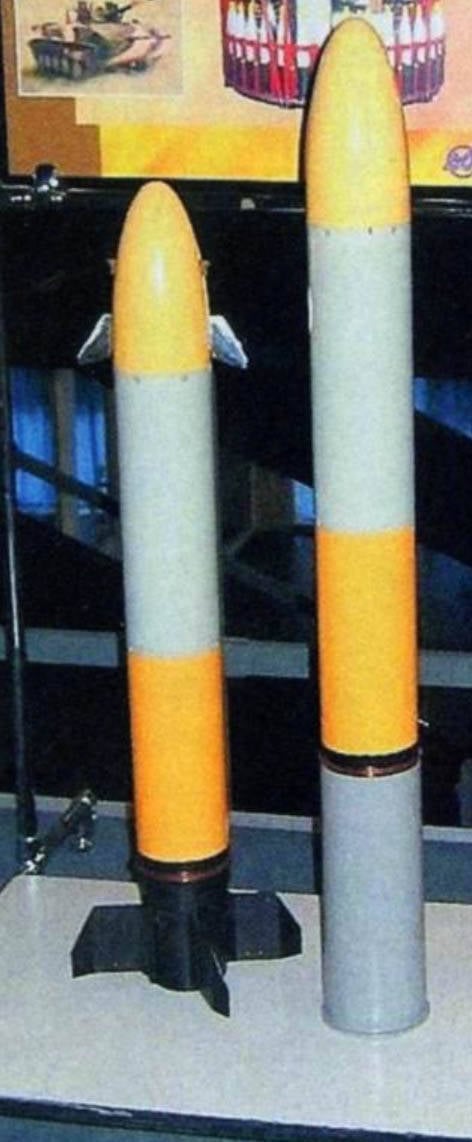
3 table. TTH 100,115-mm complexes of tank guided missiles
The Tula KBP also develops its guided missile weapon system with a homing missile equipped with a tandem warhead. The rocket will hit enemy tanks at a distance of up to 8 km from the upper hemisphere, and the tank itself will be able to fire from closed positions on several targets almost simultaneously and after launching to go into cover, not waiting for the rocket to reach the target.
Tula KBP has a wealth of experience in creating ammunition with semi-active seeker. The principles and proven technical solutions implemented in the controlled shells of the Krasnopol-МХNUMX, Kitolov-2М and other systems with semi-active seeker and induced by the reflected laser beam could also be used in tank-controlled munitions. These complexes are capable of striking with the first shot with the probability of a direct hit on the target at the 2 level not only fixed, but also moving tanks and other armored targets, at a distance of 0,8 and 25 km, respectively. In this case, the illumination of the target with a laser beam in modern conditions could be carried out either from autonomous UAVs, like the American class I T-Hawk and the Fire Scout class UAVs, or using our own UAV, fired from a tank gun like an Italian tank UAV "Horus" (see the article "Foreign Tank Guided Ammunition", "Weapon" № 12, 2 g.).
In Tula KBP, multi-purpose air ("Hermes-A"), ground ("Hermes") and sea ("Hermes-K") airborne systems with a homing supersonic rocket are being developed. The maximum flight speed of the 1000 rocket, m / s; the average 500 m / s. The inertial or radio command guidance system is supposed to be used at the target area, and the semi-active laser or infrared (passive thermal imaging homing) and their combination (semi-active laser homing + infrared homing) are used at the end of the target area.
The complex is designed to destroy, above all, modern and advanced tanks, as well as lightly armored and other mobile and fixed targets. The missile has a high-explosive fragmentation warhead weighing 28 kg, containing 18 kg of explosive. In the air-based version, the maximum firing range, day and night, is 15-20 km, and the target can be illuminated with a laser beam directly from a helicopter. In 2009, the Hermes-A complex was first presented at the UEX-2009 defense exhibition in Abu Dhabi and the MAKS-2009 air show. It is assumed that it will be part of the armament of the Ka-52 and MI-28H helicopters. According to the head of the delegation of KBP Yuri Savenkov, the flight tests of the new Hermes missile system should be carried out by the PCU in 2010, and in 2011-2012. launch this complex into mass production for the Russian Ministry of Defense. Since the missile launch stage was made in the caliber 130-mm, it can be assumed that the GOS developed for this rocket (including the IK-GOS) with some design changes could also be used in 125-mm self-guided missiles.
Unfortunately, today tank-based anti-tank missile systems adopted by the Russian army are not. References of high-ranking military men to the fact that they are too expensive and that there are no means to put them into service seem strange against the background of billion-dollar contracts for the purchase of weapons in other countries in which we buy or are going to buy weapons (Israel, Italy). At the same time, the number of these countries is increasing. Now we are gradually turning from the main supplier of arms to the world market into the main buyer. This, ultimately, is reflected in the main creators of the Russian technology - engineers, the actual (and not average) salary of which is much lower than in many other areas of work. Hence the reluctance of young people to go into the defense industry, and if the situation does not change, then the industry is threatened with degeneration and collapse.
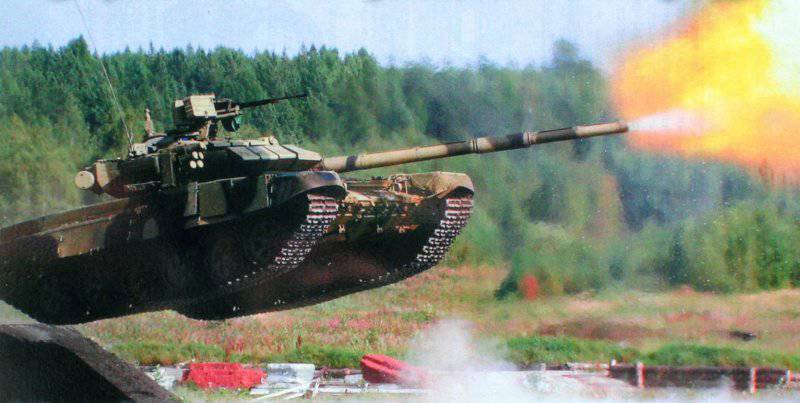
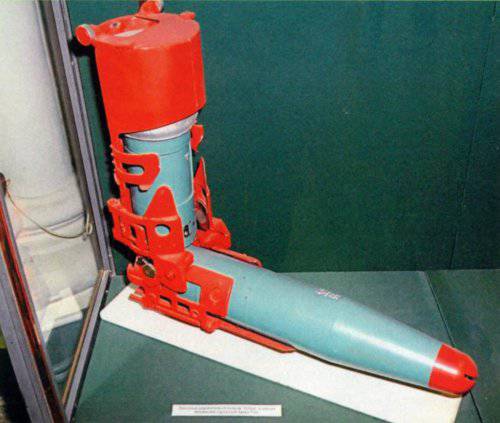
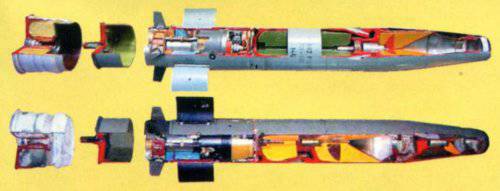
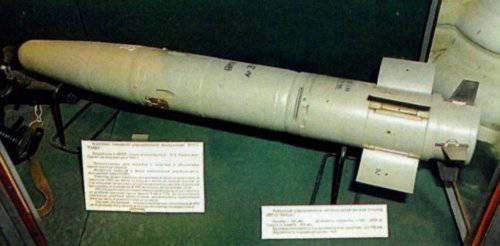
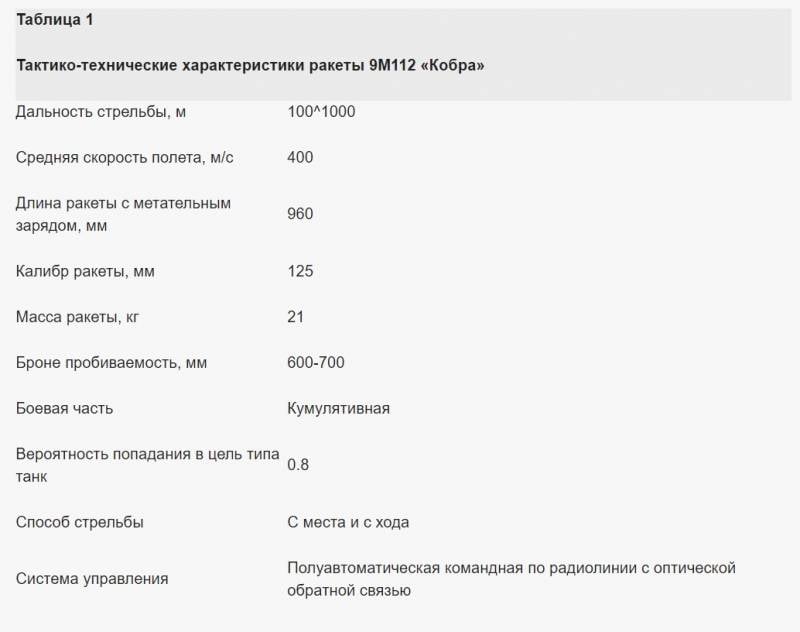
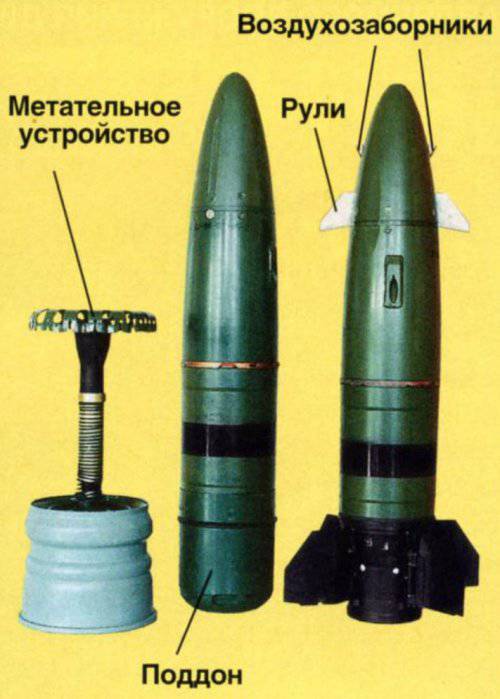
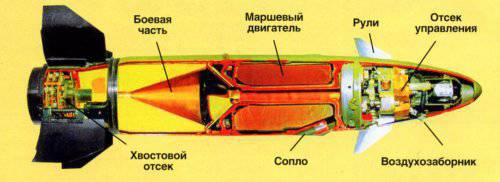
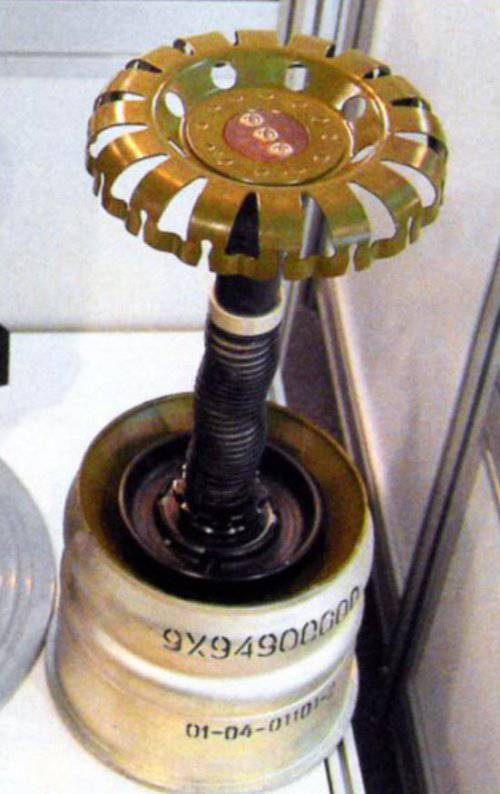
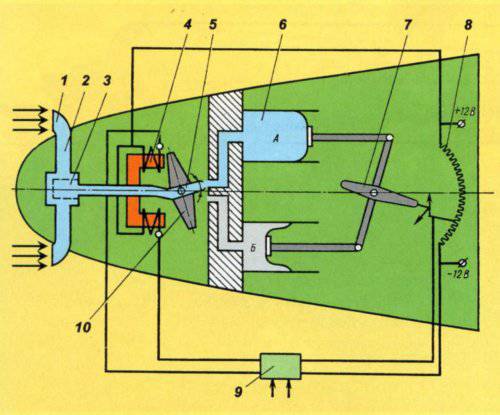
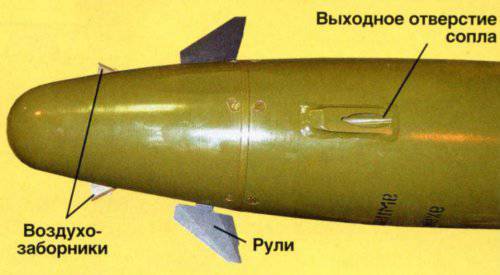
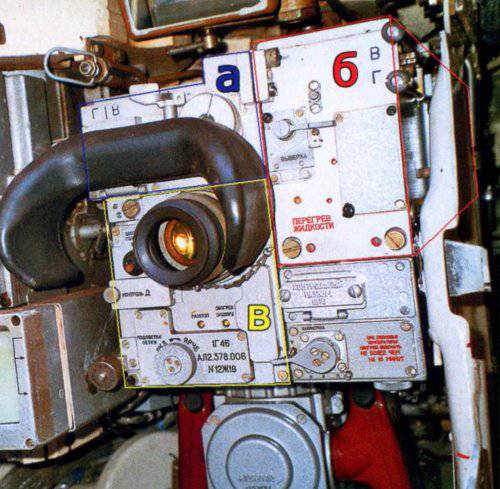

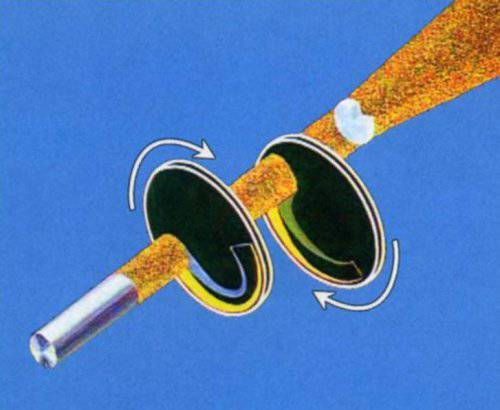
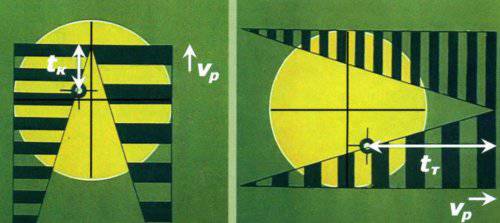
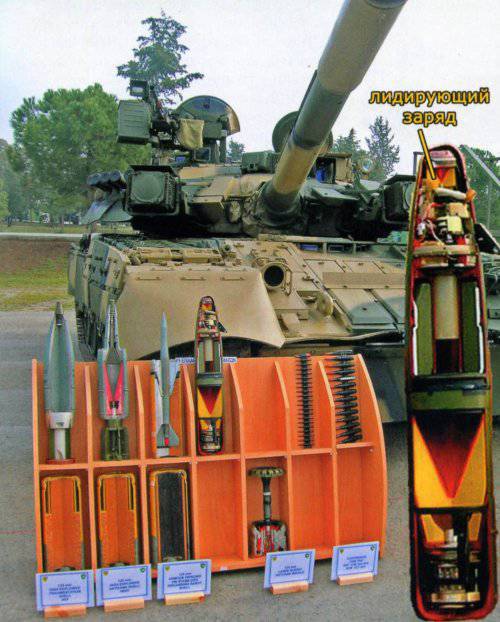
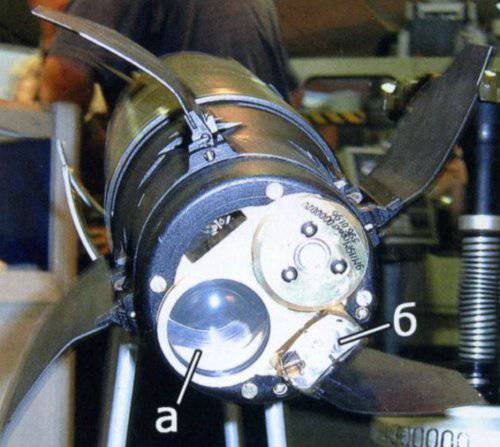

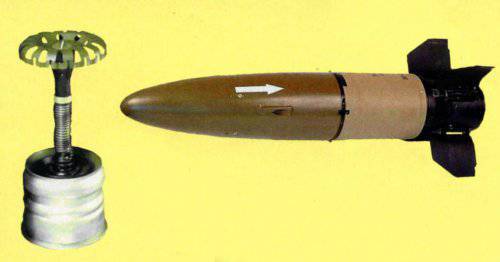
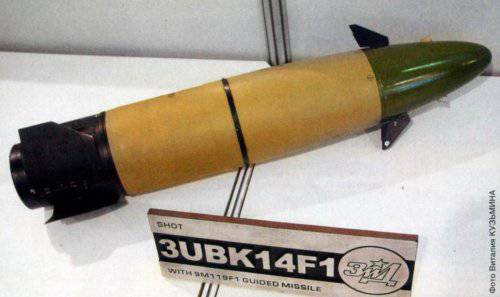
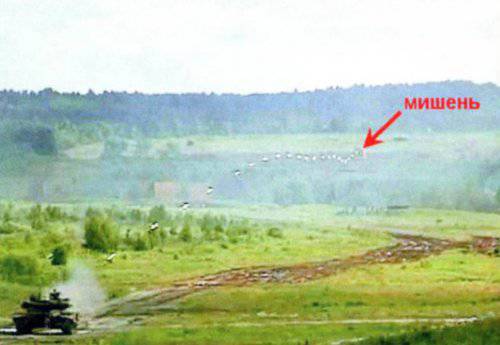
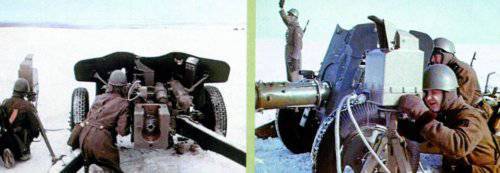

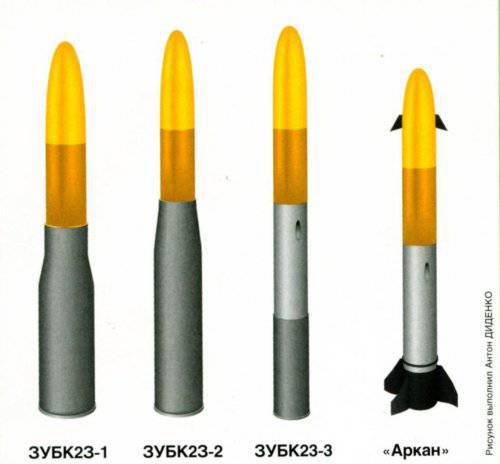
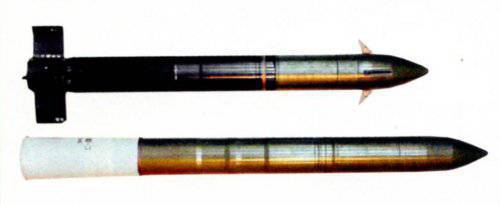
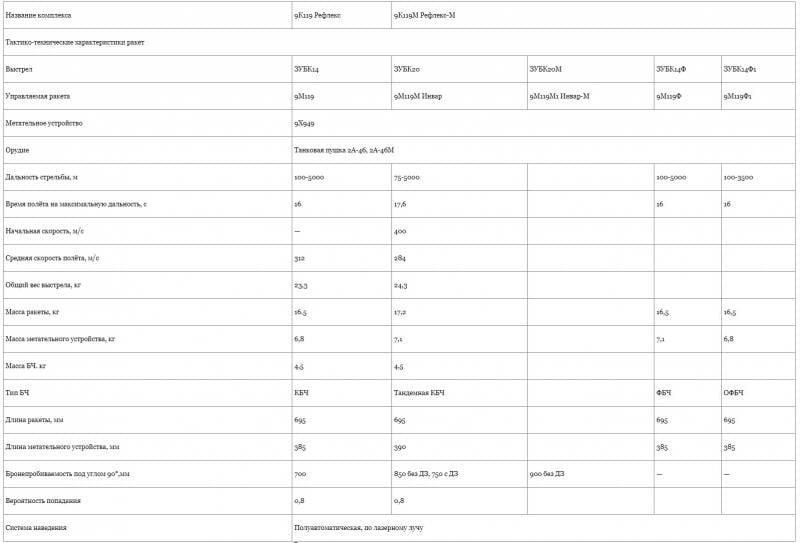
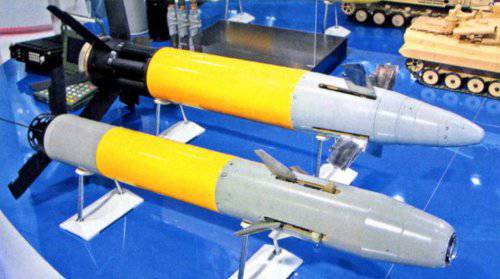
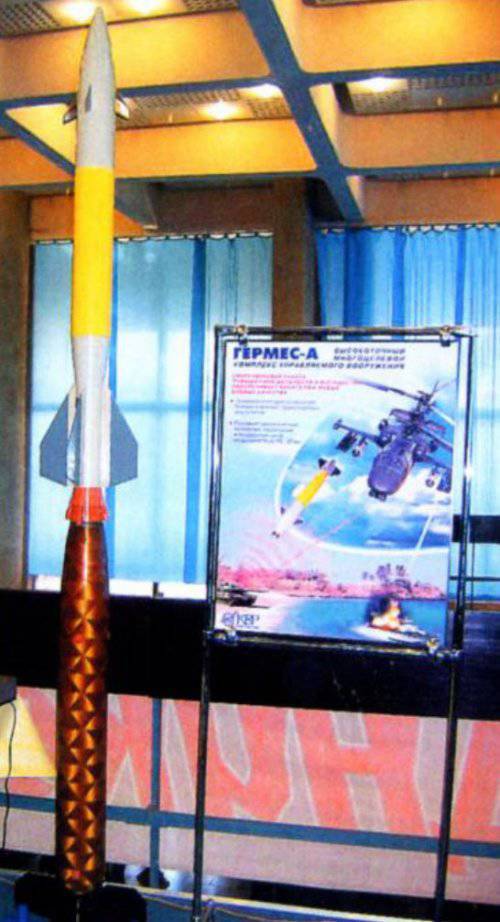
Information